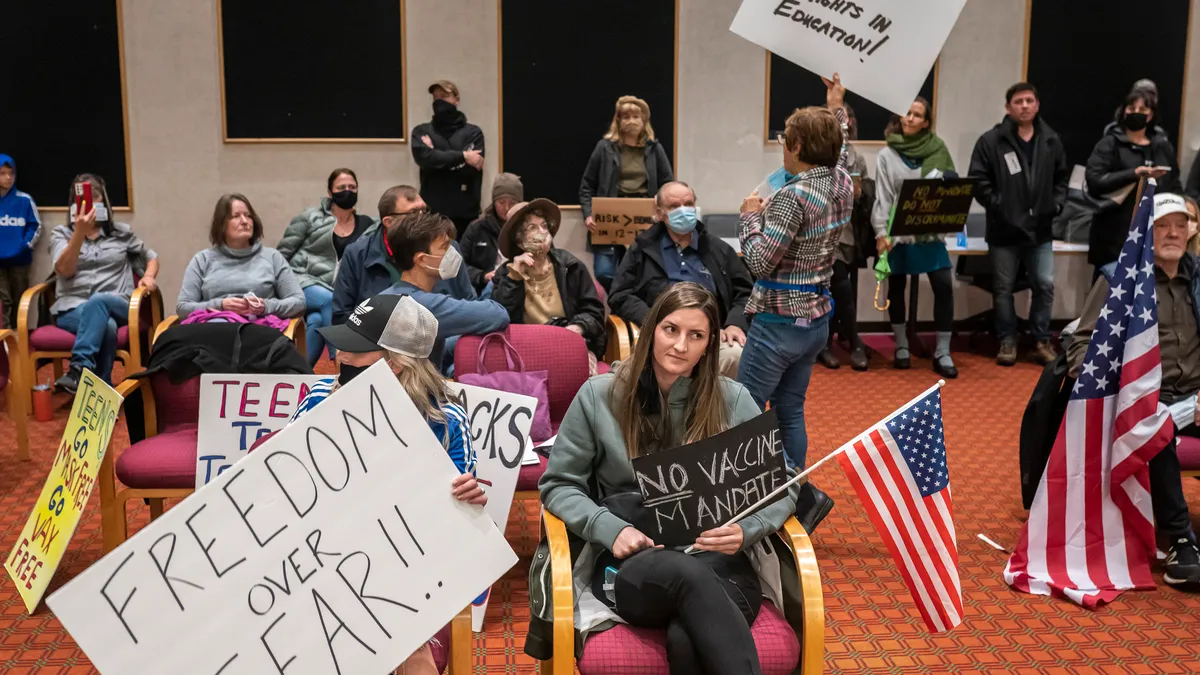Dive Brief:
- While the 2018-19 academic year came with significant educator shortages, still-low educator salaries and a persisting achievement gap, many states celebrated a victory in K-12 this year: higher state education spending. A report from the National Association of State Budget Officers (NASBO) found 38 states allotted for more K-12 education spending in fiscal year 2019, EdWeek Market Brief writes.
- States get to spend more on education because fiscal 2019 saw general fund spending increase by 4.3% over fiscal 2018, NASBO says. Within K-12, where states spent $294.8 billion in general funds in fiscal 2018, states upped spending by $10.9 billion over last fiscal year.
- These upticks may look good on paper, but district officials say there's more to the story: Local costs, state mandates and other factors can get in the way of funding K-12 education, EdWeek Market Brief notes. Plus, not every state got to increase K-12 spending, with five states — Alaska, Louisiana, Mississippi, Nevada and Vermont — making cuts.
Dive Insight:
As districts and schools continue to struggle with inequities such as the homework gap and insufficient technology programs, stakeholders have pushed for all schools to have access to more resources, whether technological or otherwise. And in order to get them, everyone needs the same thing: money.
Money is a big deal, and it drives — or at least plays a large role — in politics and policy decisions. How much money will be spent on one thing versus another can be a point of contention between opposite sides of the aisle. And in education, federal, state and district funding — as well as metrics including per-pupil spending — can go a long way in dictating which schools have what they need to help students succeed and keep up with their peers across the nation.
While research has shown that, in the short term, throwing more money at education doesn't boost student achievement, long-term spending changes at the state level improved performance outcomes.
Since the Great Recession hit in 2008, public investments have continued to decline, and there's been less money for K-12. Ten years later, school funding still hasn't quite recovered to pre-recession levels. However, this improvement is a good sign for education.
Not everyone agrees more money can help boost student performance, but regardless of those disagreements, it's indisputable that there are some schools, classrooms and students who are not getting what they need. That could mean a lack of internet access, nutritious lunch options or mental health resources. And more money for K-12 means a higher possibility that these holes can start to get filled.
Money does matter in education. There is, however, one caveat: How effective that money is depends on how it's spent.












